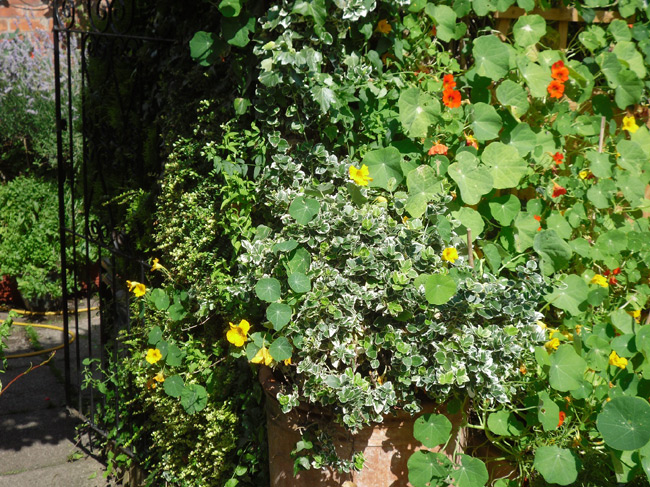
| HOME |
| NERVE |
| REVIEWS |
| ARCHIVE |
| EVENTS |
| LINKS |
| ABOUT US |
| CONTRIBUTORS |
| BACK ISSUES |
| CONTACT US |
Fireweed* - Two Flowers of Summer
By Sandra
Gibson - August 2015
Photograph by Geoff Edwards
Sitting in the garden in the lazy hours of afternoon, when all the kids have gone to the park and the only sounds and movements come from insects buzzing round flowers and fumbling their petals for nectar, is a special time to be savoured, like good tea in an unchipped white cup. These are sensuous moments with sun-comfort and heady scent, and space to be. Quite unlike any other time of the year, these days of late summer have a mature patina held for only moments - so it seems - before the early morning chills of approaching autumn are felt and the back-to-school structure reasserts its loud timings.
 |
Two flowers epitomise this time for me: the nasturtium and the lavender, their differences giving as much to the moment of sensory pleasure as their individual properties. First, the nasturtium, with its hot, cheerful colours of scarlet and bright orange and golden yellows, against a sane mid-green lily-pad of circular leaves; then the more modest lavender, with its tight-packed cylinder of pale lilac to deep purple florets and grey-green leaf spears. Their colours coming from opposite sides of the colour wheel make them look so right together. How fragile the neck stem of the nasturtium trumpet appears when compared with the ridged strength of the lavender stalks! How mobile the nasturtium flower is when the bee enters to forage; how rigidly the lavender head sustains the insects. Then, the heavy sweet scent of lavender, feeling oily on the flowers and filling drawers with summer-yearning for decades, and the dry peppery spiciness of the nasturtium, whose scent resides in the green. Put nasturtium flowers in salads for a festive shout of colour, then taste them – damp-papery and hot, the stem succulent and wet. Use caution for the lavender taste: a little goes far and the bitter note is stronger than the sweetness.
 |
The longevity of nasturtium is determined by the weather; if frosts are late there will be flowers till November. The longevity of lavender endures if you dry it in waterless vases or hang it in sheds or put it into bags of Provençale cloth. I still have a lavender bag I made in France in 1964; the scented summer memories of an eighteen year old live on.
Faintly.
Two Love Poems
Nasturtium
(Anyone visiting Monet’s garden in Giverny will remember the nasturtiums.)
Did Monsieur Monet love you for your lily-pad leaves -
your blaze of unrestrained colour -
your sun-searching face?
Was Monsieur Monet drawn to your parakeet’s tail -
the masculinity of your seeds -
your habit of trailing your train of leaves
across stony ground?
Your simple diet?
Did Monsieur Monet relish your orange pepperiness in his punctual salads?
You bet!
Mais certainement!
He loved you for all of these, as we do.
Lavender
I love the blue hint
within the greyish-green bud
long before flower-burst.
To read other Fireweed columns click here
*Also known as Rose Bay Willow Herb, the prolific wild flower called Fireweed, five feet tall with spikes of magenta flowers, cheers the hearts of those whose cityscape has become a bomb site or whose buildings have been cleared by machine. The dormant seeds spring to life after destructive events such as forest or man-made fires, hence the name, Fireweed. This occasional column will celebrate the persistence of wildlife in urban conditions.